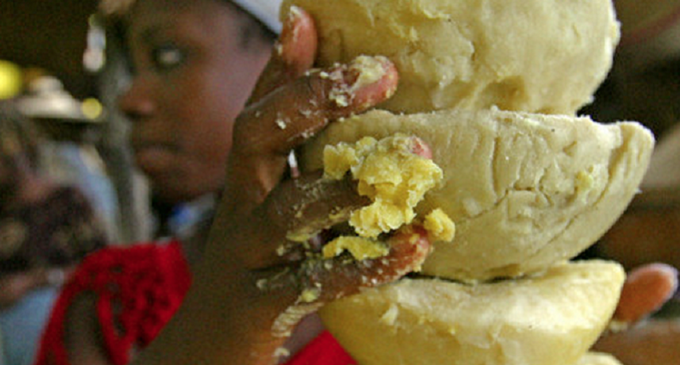
Shea butter, renowned for its moisturizing and healing properties, is a highly sought-after commodity in the beauty and skincare industry. Starting a shea butter trade can be a lucrative business venture, especially for entrepreneurs in Nigeria and across Africa where shea trees are abundant. This Q&A article will guide you through the essentials of starting and thriving in the shea butter trade, providing you with actionable insights and real-life examples.
Q1: What is Shea Butter and Why is it Valuable?
Answer: Shea butter is a natural fat extracted from the nuts of the shea tree (Vitellaria paradoxa), which is native to West Africa. It is rich in vitamins A, E, and F, and has anti-inflammatory and antioxidant properties. These qualities make it a popular ingredient in cosmetics, skincare, and haircare products globally. Its demand continues to rise due to the increasing consumer preference for natural and organic products.
Q2: How Can I Source Quality Shea Nuts?
Answer: Sourcing high-quality shea nuts is critical for producing premium shea butter. Here are steps to ensure you get the best raw materials:
- Identify Reliable Suppliers: Establish relationships with local farmers or cooperatives known for high-quality shea nuts.
- Quality Inspection: Ensure that the nuts are fresh, free from mold, and properly dried.
- Fair Trade Practices: Engage in fair trade practices to ensure sustainable sourcing and support for local communities.
Example: In Nigeria, organizations like the Nigerian Export Promotion Council (NEPC) provide directories of certified shea nut suppliers, ensuring quality and reliability.
Q3: What Are the Steps to Processing Shea Butter?
Answer: The process of making shea butter involves several key steps:
- Collection and Cleaning: Gather and clean the shea nuts to remove any debris.
- Crushing and Roasting: Crush the nuts and roast them to release the oils.
- Grinding: Grind the roasted nuts into a paste.
- Boiling: Boil the paste to separate the oil from the solids.
- Skimming and Filtering: Skim off the oil and filter it to remove impurities.
- Cooling and Packaging: Allow the oil to cool and solidify before packaging it for sale.
Example: In Ghana, the Shea Network Ghana (SNG) provides training and resources to women cooperatives on the best practices for shea butter production, ensuring high-quality output.
Q4: What Are the Key Markets for Shea Butter?
Answer: The primary markets for shea butter include:
- Cosmetics and Skincare: Major cosmetic brands use shea butter in lotions, creams, and soaps.
- Pharmaceuticals: Shea butter is used in medicinal ointments for its healing properties.
- Food Industry: In some regions, shea butter is used as a cooking fat or chocolate substitute.
Example: In Nigeria, companies like Shea Radiance have successfully tapped into international markets, exporting high-quality shea butter products to North America and Europe.
Q5: How Do I Ensure Compliance with Export Regulations?
Answer: Ensuring compliance with export regulations is crucial for accessing international markets. Here are steps to follow:
- Obtain Certifications: Acquire necessary certifications such as Organic, Fair Trade, and NAFDAC (for Nigerian products).
- Adhere to Quality Standards: Follow international quality standards like ISO and the EU regulations for cosmetic products.
- Export Documentation: Ensure all export documentation, such as the Certificate of Origin and Phytosanitary Certificate, are in order.
Example: The African Organisation for Standardisation (ARSO) provides guidelines and standards to help African producers meet international requirements, facilitating smoother exports.
Q6: How Can I Market My Shea Butter Products?
Answer: Effective marketing strategies can help you reach a broader audience:
- Branding: Create a strong brand identity that highlights the natural and ethical aspects of your shea butter.
- Online Presence: Use social media platforms, e-commerce sites, and a dedicated website to showcase your products.
- Networking: Participate in trade shows, fairs, and networking events to connect with potential buyers and distributors.
Example: Nigerian brands like Natural Nigerian and R&R Luxury have leveraged social media and online marketplaces to successfully market their shea butter products globally.
Q7: What Are Some Challenges in the Shea Butter Trade and How Can I Overcome Them?
Answer: Common challenges include:
- Quality Control: Ensuring consistent quality can be challenging. Implement strict quality control measures throughout the production process.
- Market Access: Gaining access to international markets can be difficult. Partner with export agencies and use online platforms to reach global customers.
- Sustainability: Ensuring sustainable practices can be complex. Engage in fair trade practices and support local communities to promote sustainability.
Example: In Burkina Faso, the Global Shea Alliance works with local cooperatives to ensure sustainable practices and improve market access for shea butter producers.
Conclusion
Starting a shea butter trade can be a rewarding venture, offering substantial economic benefits and supporting local communities. By understanding the production process, sourcing quality materials, adhering to export regulations, and implementing effective marketing strategies, you can build a successful shea butter business. With the rising global demand for natural products, now is the perfect time to invest in the shea butter trade. Whether you are in Nigeria or elsewhere in Africa, this guide provides you with the knowledge and inspiration to get started and thrive in the shea butter industry.

